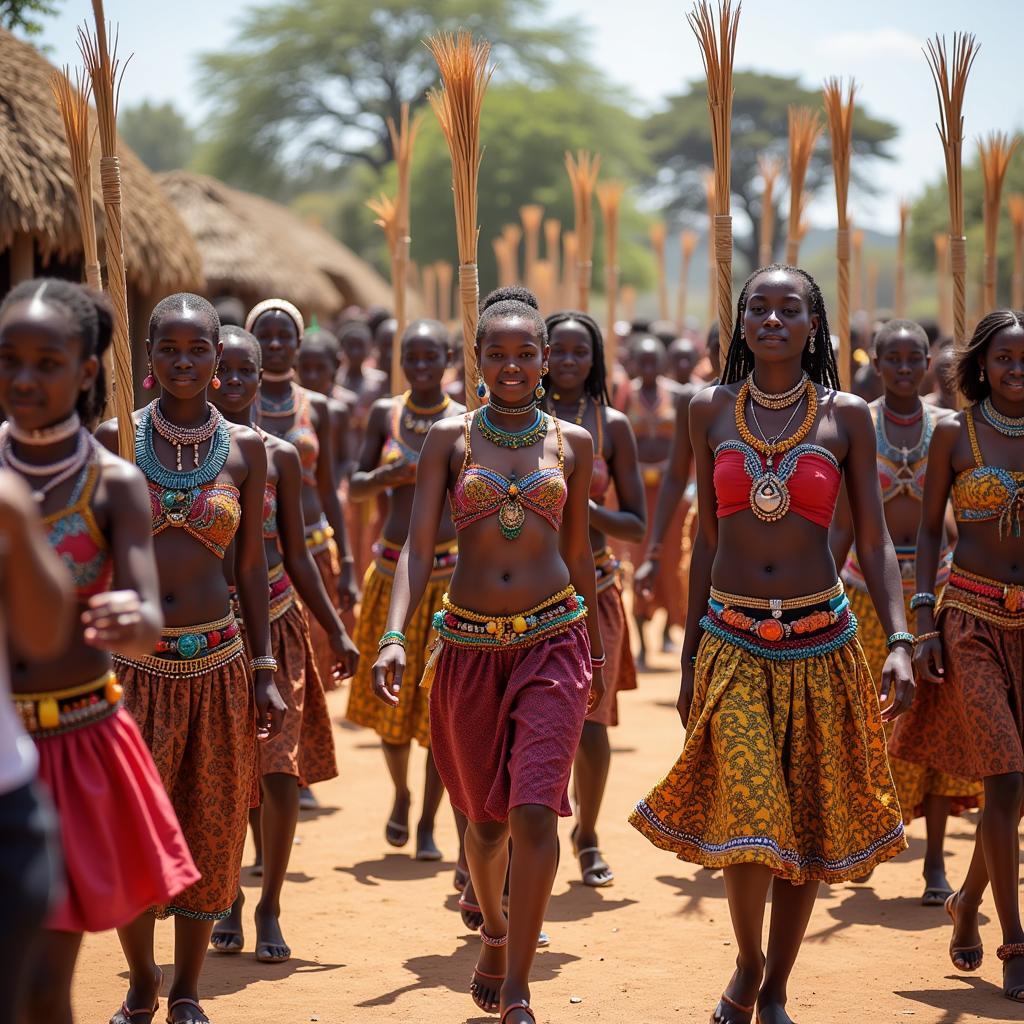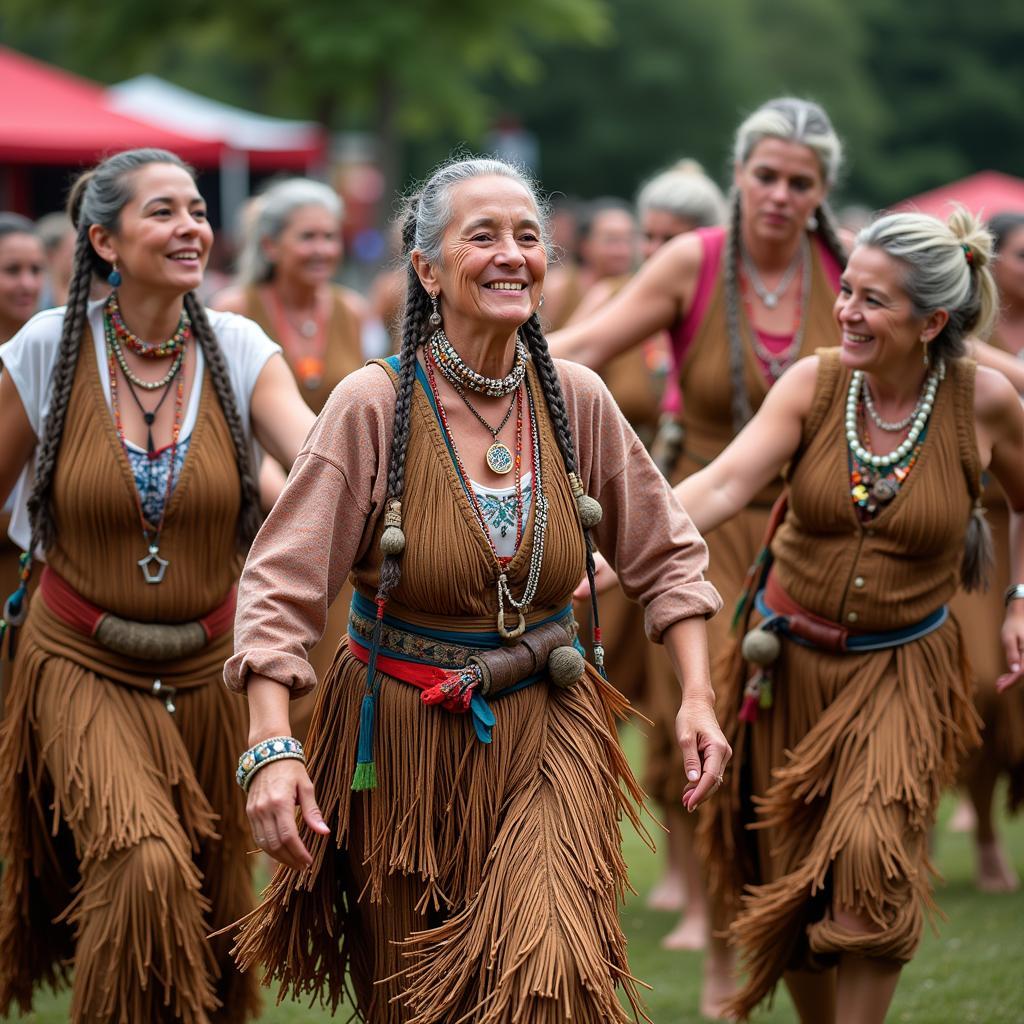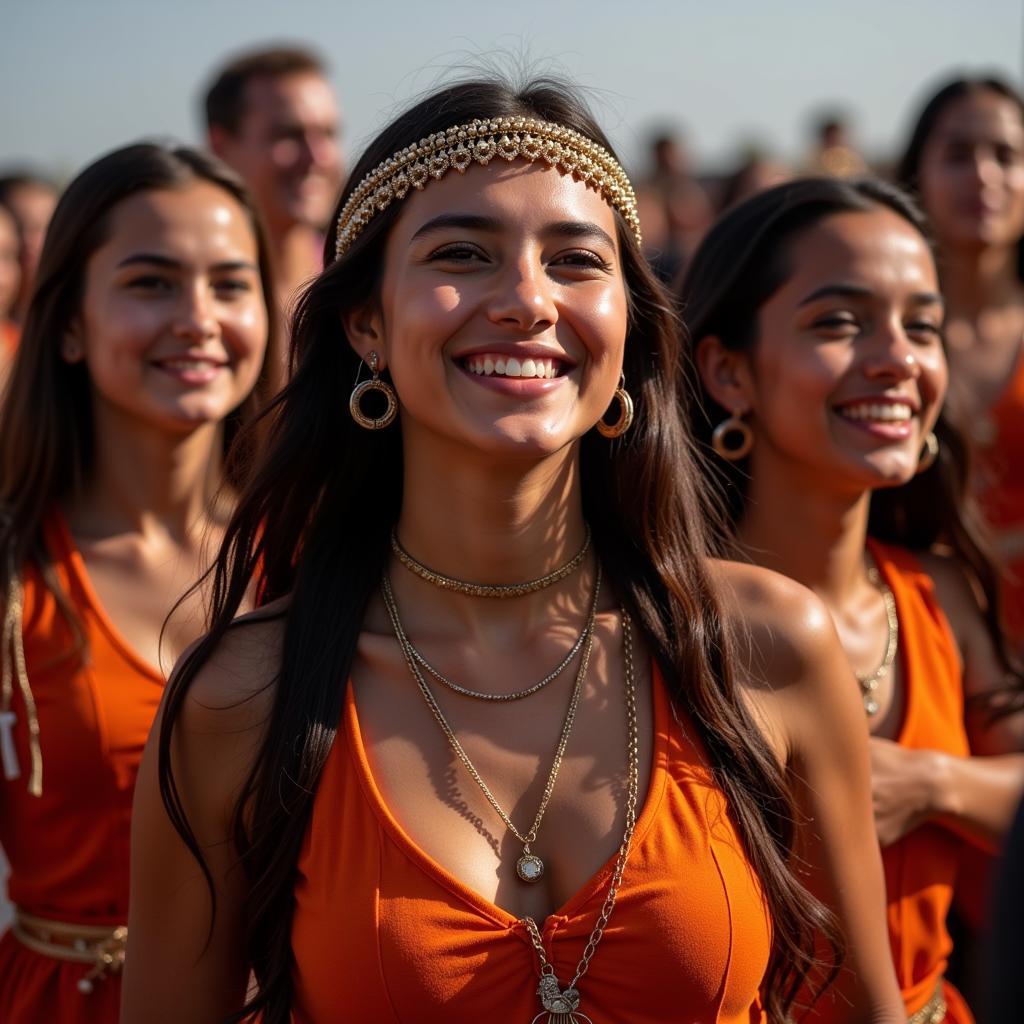The African Girls’ Reed Dance: A Celebration of Womanhood and Tradition
The African girls’ reed dance, a vibrant and culturally significant ceremony, offers a captivating glimpse into the traditions of several African cultures. This coming-of-age ritual, often referred to as the Umhlanga in Zulu culture, marks the transition from girlhood to womanhood, celebrating purity, respect, and community unity.
Unveiling the Significance of the Reed Dance
The reed dance holds profound meaning within the communities that practice it. More than just a ceremony, it represents a vital thread connecting generations and reinforcing cultural identity. Let’s delve into the core reasons behind its significance:
- Rite of Passage: The dance serves as a symbolic transition for young girls, acknowledging their journey into womanhood and the responsibilities that come with it.
- Celebration of Purity: A central theme of the reed dance is the emphasis on chastity and virtue. Participating girls are often expected to abstain from sexual activity leading up to the event, symbolizing purity and self-respect.
- Display of Respect: The reed dance is deeply rooted in respect – respect for elders, tradition, and the cultural heritage it represents.
- Community Bonding: The ceremony brings together entire communities, fostering a sense of belonging, shared heritage, and collective pride.
A Glimpse into the Reed Dance Ceremony
 Girls in Traditional Attire at Reed Dance
Girls in Traditional Attire at Reed Dance
While the specifics of the reed dance may vary across different cultures and regions, there are common threads that weave through these ceremonies. Here’s a glimpse into the general proceedings:
- The Gathering of Reeds: The ceremony often commences with the young women venturing out to collect reeds from a designated area, symbolizing their strength and readiness for womanhood.
- The Procession: Adorned in vibrant traditional attire, the girls then form a procession, each carrying a tall reed, and make their way towards the royal residence or a designated location.
- The Dance: With grace and precision, the girls participate in choreographed dances, moving in unison while holding their reeds aloft. The dances often convey stories, cultural values, and ancestral reverence.
- Presentation to the King or Chief: A pivotal moment arrives when the girls present their reeds to the local ruler, a gesture symbolizing respect and their readiness to embrace their roles within the community.
Dispelling Myths and Misconceptions
Over time, some misconceptions about the reed dance have arisen, particularly regarding its connection to forced marriages. It’s important to address these inaccuracies:
- Voluntary Participation: Participation in the reed dance is generally voluntary. Girls choose to take part, driven by a sense of cultural pride and a desire to honor their heritage.
- Not a Bride Market: Contrary to some beliefs, the reed dance is not intended as a platform for arranged marriages. While the ceremony may attract suitors, the decision to marry remains with the individuals involved and their families.
 Women of Different Ages Participating in Reed Dance
Women of Different Ages Participating in Reed Dance
The Enduring Legacy of the Reed Dance
In a world experiencing rapid change, the African girls’ reed dance stands as a testament to the enduring power of tradition and cultural heritage.
- Cultural Preservation: The ceremony plays a vital role in preserving cultural practices and ensuring their transmission to future generations.
- Empowerment of Young Women: The reed dance offers a platform for young women to embrace their cultural identity, celebrate their strength, and connect with their heritage.
- Tourism and Cultural Exchange: The reed dance has become a significant cultural attraction, drawing visitors from across the globe and fostering intercultural understanding and appreciation.
FAQs about the African Girls’ Reed Dance
1. What is the significance of the reeds in the dance?
The reeds symbolize purity, strength, and the girls’ readiness to transition into womanhood.
2. Is the reed dance only practiced by the Zulu people?
While prominently associated with the Zulu culture, variations of the reed dance are practiced by other ethnic groups in Southern Africa, each with its unique customs.
3. How long does the reed dance ceremony last?
The duration varies, but it typically spans several days, encompassing various rituals, dances, and celebrations.
Exploring Further
To delve deeper into the fascinating world of African culture, you can read more about:
 A Group of Girls Smiling during Reed Dance
A Group of Girls Smiling during Reed Dance
The African girls’ reed dance is a powerful reminder of the beauty and diversity of African cultures. It’s a celebration of womanhood, tradition, and the unbreakable bonds that unite communities.

